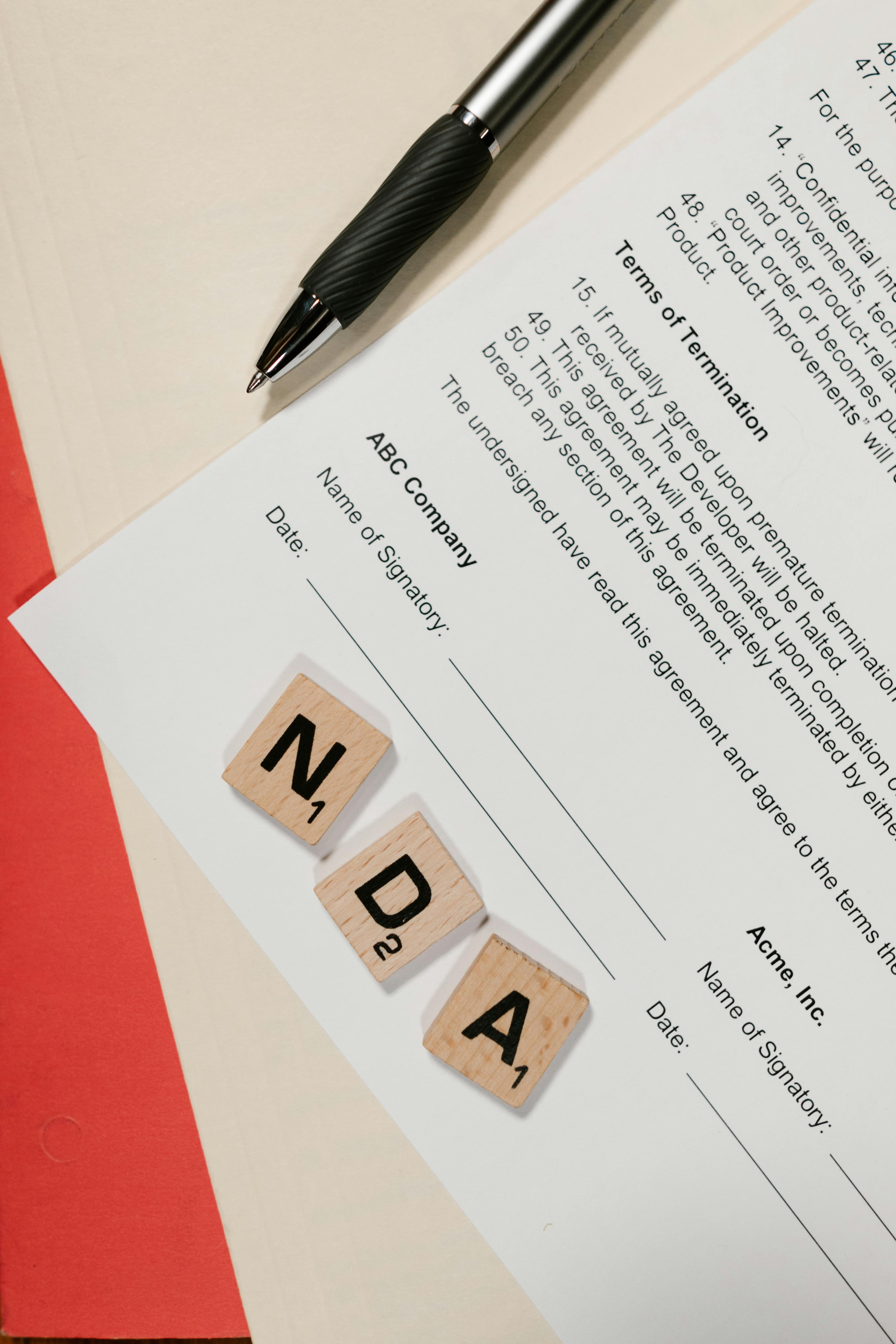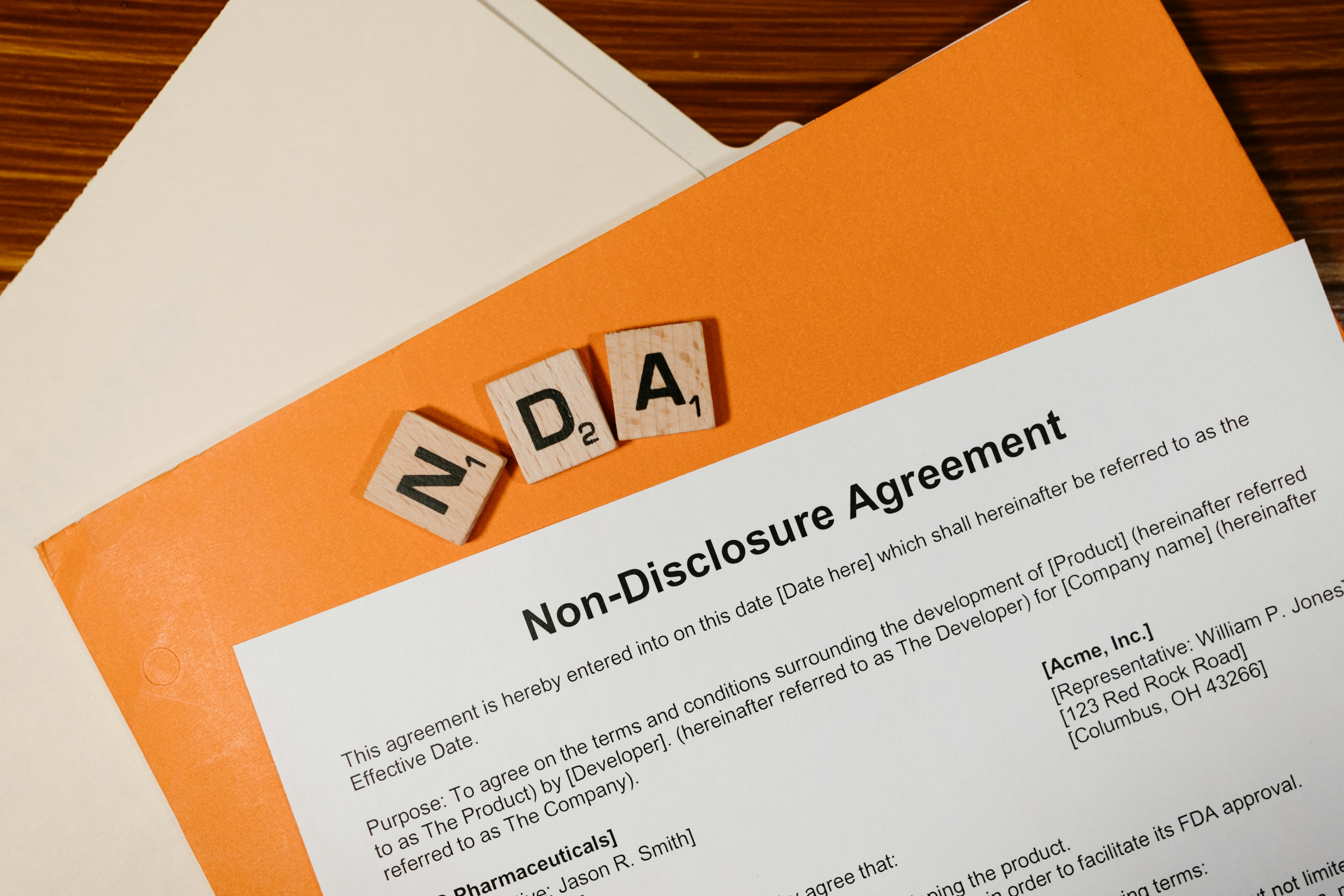The employer usually provides its form of employment contract template to the employee. This gives the employer significant advantages by including terms in favor of the employer in the employment agreement, as most employees would not seek to negotiate such agreements. Most employers, whether first-time or seasoned, would want to ensure that all key and relevant terms are included in the employment contract to avoid issues and disputes in the future.
This guide discusses the key terms to be included in the employer’s basic employment contract template, as well as answers frequently asked questions by employers relating to employment law.
A. What is an Employment Contract?
An employment contract is a legally enforceable agreement between an employer and an employee where specific employment terms and conditions are clearly outlined. Generally, an employment contract contains details such as the employee’s duties, duration of the contract, health insurance policy, wages and entitlements, grounds for termination, termination procedures, confidentiality provisions, etc.
The Employment Ordinance (Cap 57 of the laws of Hong Kong) (the “EO”) is the primary legislation governing the terms and conditions of employment in Hong Kong. It sets out the rights, duties, and benefits of employees and employers, such as the probationary period, annual leave, maternity leave, paternity leave, termination of employment, notice for termination, etc.
The terms and conditions of the employment contract must comply with the EO. Any term of an employment contract that violates the provisions of the EO or reduces any benefits conferred upon the employee by the EO will be void.
Therefore, an employment contract forms a vital part of an employment relationship as it manages expectations between parties and clearly sets out the terms and conditions of employment. We understand that writing an employment contract from scratch might be difficult. Keep reading this article to find out 5 important things to look out for in your employment contract, or scroll down to the bottom to download our employment contract templates!
B. Probation Period
1. What is a Probation Period?
A probation period is a trial period at the start of employment for newly recruited employees. Such periods help employers determine whether the newly recruited employee is suitable for the position, and unfit candidates may be dismissed with little notice if the probationary clause clearly sets out such requirements.
Probation periods are important as they provide a chance to determine whether the newly recruited member is a good fit for the position they were recruited for. Even the most effective recruitment process may not reveal a full picture of a candidate’s competencies and weaknesses.
The new employee may turn out to be very different from how they appeared during the recruitment process. You can take quick action and find replacements if you realize that the newly recruited employee is incompetent or isn’t a good fit for the company’s culture after they start work.
2. How Should I Set Out a Probation Period in the Employment Contract?
You should insert a probationary period clause in the employment contract by including the following details about probationary periods:
These details should be stated in the clause:
- The length of the intended probationary period
- The expectations employees should meet to pass their probationary period
- Termination procedures for terminating employees on probation
- Reserving rights to extend the probationary period
In Hong Kong, there are no statutory limits on the length of the probationary period. However, it should be reasonable despite the absence of statutory legal requirements to avoid being challenged. You might consider the nature of the assessed role and how long you need to decide whether a candidate is suitable for the role before deciding the length of a probationary period. Generally, probationary periods last for one to three months.
3. What are the Entitled Rights of Employees on Probation?
Employees on probation are entitled to the same statutory rights as employees who have completed their probation, including minimum wage, statutory sick pay, protection against unfair dismissal, and unlawful discrimination.
For non-statutory entitlements, you may exercise discretion on whether employees shall be entitled to such by stating them clearly in the probation period clause.
4. Can an Employee be Terminated during the Probationary Period in Hong Kong?
Yes, you can terminate an employee during the probationary period as follows:
- During the first month of probation: an employee can be terminated without notice
- After the first month of probation: the employee must be given the notice period specified in the employment contract (minimum 7 days notice). In the absence of notice, the employer may make payment in lieu of the notice period.
C. What Kinds of Leave are Employees Entitled to in Hong Kong?
To avoid confusion, potential disputes, and to precisely calculate an employee’s entitlement to leave, you should clearly stipulate details of benefits and rights entitled by employees in the employment contract. Details such as how many days of leave employees are entitled to, how much notice they should give in advance, and whether any supporting documents are required should be included in the clause.
Although you are free to negotiate with your employees to decide whether extra leave will be granted, there is always a legal minimum regarding the right to take leave that you must strictly adhere to.
1. Annual Leave
Annual leave is paid time off work provided to employees and can be used for any purpose. In Hong Kong, the number of annual leave entitlements depends on the employee’s length of service.
(a) How much annual leave are workers entitled to in Hong Kong?
Employees are entitled to paid annual leave after being employed under a continuous contract for every 12 months. If an employee’s period of employment is less than 3 months in a leave year, they are not entitled to any annual leave.
The legal minimum regarding annual leave entitlements is summarized below:
| Years of Service | Annual Leave Entitled to (days) |
| 1 | 7 |
| 2 | 7 |
| 3 | 8 |
| 4 | 9 |
| 5 | 10 |
| 6 | 11 |
| 7 | 12 |
| 8 | 13 |
| 9 or above | 14 |
The annual leave should be granted for an unbroken period. However, upon an employee’s request, an employer can grant it as follows:
- Annual leave > 10 days: At least 7 days should be granted consecutively
- Annual leave < 10 days: Up to 3 days can be granted separately, and the balance should be granted consecutively
The time for taking annual leave is specified by the employer after consulting with the employee. The employer must give at least 14 days’ advance notice to the employee. However, the parties may mutually agree to a shorter notice period.
If an employer, without reasonable excuse, fails to grant annual leave to an employee, they are liable to prosecution and, upon conviction, to a fine of $50,000.
(b) Can an employer pay the employee in lieu of annual leave?
The employee may choose to receive payment in lieu of the leave entitlement that exceeds 10 days.
Annual leave payment is a sum of the daily wage rate of the employee in the 12-month period preceding the specified dates of the annual leave.
If an employer fails to pay annual leave pay to an employee, they are liable to prosecution and, upon conviction, to a fine of $50,000.
2. Sick Leave, Statutory Holidays, and Rest Days
(a) Sick Leave
Sick leave is paid time off work provided to employees and can be used to address their health needs.
Under the EO, an employee under a continuous contract is entitled to accrue paid sick leave days as follows:
- During the first 12 months of employment – 2 paid sick days for each completed month of employment
- After completing the first 12 months of employment – 4 paid sick days for each completed month of employment
Paid sickness days can be accumulated up to a maximum of 120 days.
The accrued sick leave days are paid at the rate of four-fifths of the employee’s average daily wages calculated over the previous 12-month period (or a shorter period if the employee has been employed for less time). For further information on eligibility and payment for sickness allowance, please visit https://www.labour.gov.hk/eng/public/wcp/ConciseGuide/05.pdf.
(b) Statutory Holidays
Irrespective of an employee’s length of service, they are entitled to 12 statutory holidays:
- 1st January
- Lunar New Year’s Day
- The second day of Lunar New Year
- The third day of Lunar New Year
- Ching Ming Festival
- 1st May (Labour Day)
- Tuen Ng Festival
- 1st July (HKSAR’s Establishment Day)
- The day after the Chinese Mid-Autumn Festival
- Chung Yeung Festival
- 1st October (National Day)
- Chinese Winter Solstice Festival or Christmas Day (the employer can choose which one)
To understand if you can ask your employee to work on a statutory holiday, read our article Can I ask my employee to work on a statutory holiday?.
\(c) Rest Days
Employees under a continuous contract of employment are entitled to a minimum of 1 rest day for every 7 days. It should be for a continuous period of at least 24 hours during which the employee is entitled to abstain from working for the employer. The employer can appoint a rest day on a regular or irregular basis. For further guidelines on the appointment of rest days, you may visit: https://www.labour.gov.hk/eng/public/wcp/ConciseGuide/04.pdf.
3. Maternity Leave
Maternity leave is a period of time to allow pregnant employees to take time off from work.
(a) How many days of maternity leave is an employee entitled to in Hong Kong?
According to the recently gazetted Employment (Amendment) Ordinance 2020, pregnant employees are entitled to 14 weeks of paid maternity leave upon meeting the following conditions:
- The pregnant employee has been employed under a continuous contract for not less than 40 weeks immediately before the commencement of maternity leave. “Continuous Contract” implies employment of at least 18 hours per week for four consecutive weeks by the same employer
- The pregnant employee has given notice of pregnancy and her intention to take maternity leave to the employer
- The pregnant employee has produced a certificate specifying the expected date of confinement by professionally trained people upon the employer’s request
Pregnant employees who have been employed under a continuous contract for less than 40 weeks immediately before the commencement of maternity leave are entitled to 14 weeks’ unpaid maternity leave.
Maternity leave can commence 4 weeks before the expected date of birth. However, if the baby is born early (i.e., prior to the agreed start date for maternity leave), the 14-week period will begin from the date of the birth.
(b) How is maternity pay calculated?
Maternity pay is calculated at the rate of 4/5th of the employee’s average daily wages. However, the pay for extended maternity leave of 4 weeks is subject to a cap of $80,000.
\(c) Do employers get reimbursed for maternity pay?
Employers can apply for reimbursement for the additional 4 weeks of statutory maternity leave cost by submitting an application supported by prescribed documents. For further details, refer to the Reimbursement of Maternity Leave Pay Scheme published by the Labour Department.
(d) Offences and Penalties
Under the EO, it is an offence for an employer to dismiss a pregnant employee, and the employer is liable to prosecution and, on conviction, to a fine of $100,000. Employers may also be required to pay the following sums of money to the dismissed employee:
- Payment in lieu of notice
- A further sum of one month’s wages as compensation
- 14 weeks maternity leave pay, provided she was entitled to such payment if not dismissed
However, an employer is not prohibited from dismissing a pregnant employee in the case of:
- Summary dismissal due to serious misconduct
- Probationary employment, provided the probation period is less than 12 weeks and the employee was dismissed for reasons other than pregnancy
4. Paternity Leave
Paternity leave is a period of time where an expecting father or a partner of an expecting mother can take time off from work.
(a) How many days of paternity leave is an employee entitled to in Hong Kong?
Male employees are entitled to 5 days of paternity leave for each confinement of their partner upon meeting the following conditions:
- He is the father of a newborn child or a father-to-be
- He has been employed under a continuous contract
- He has notified his employer of his intention to take paternity leave at least 3 months in advance before the expected date of delivery
To take paternity leave, the employee must inform the start date of his paternity leave at least 5 days before taking the leave if the employee has failed to give the 3-month notice.
The employee is not required to submit any documentary evidence to be eligible for paternity leave. However, upon the employer’s request, the employee will have to submit a written statement signed by him stating:
- The name of the child’s mother
- The expected/actual date of delivery of the child
- That he is the child’s father
Later, the employee will need to provide the birth certificate of the child on which the employee’s name is entered as the child’s father.
Paternity leave can be taken at any time during the first four weeks before the expected date of delivery and the fourteen weeks after the actual birth of the child. It can be taken separately or all together in one go.
(b) How is paternity pay calculated?
Paternity pay is calculated at the rate of four-fifths of the average daily wages earned by an employee in the 12-month period preceding the paternity leave. If an employee is employed for less than 12 months, the calculation is based on a shorter period.
\(c) Offences and Penalties
If an employer fails to grant paternity leave or paternity pay to the employee, they are liable to prosecution and, upon conviction, to a fine of $50,000.
D. Notice Period
1. What is a Notice Period?
The notice period is the time period between (1) the employee handing in their notice, or (2) the employee being notified of dismissal, and the actual end of their last working day.
It starts when the employee submits a formal resignation letter indicating the intention to terminate the employment relationship, or when the employer gives the employee a notice of termination of employment in any form.
The notice period benefits both the employer and the employee, and there is always a legal minimum regarding the required length of the notice period. Observing a notice period provides sufficient time to look for another suitable candidate to replace the dismissed employee and request the leaving employee to train their successor.
This amount of time reduces the hindrances caused to the company’s operations due to the effect of dismissal or termination of employment.
Please refer to the following link for a template of an Employee Termination Letter: https://hire.legal/document/1718/employee-termination-letter-employment-termination-letter.
2. How Much Notice Should I Give My Employees?
You are free to negotiate with your employees and agree on a certain length of the notice period required for terminating the employment relationship. However, you must adhere to statutory limitations, as there is always a legal minimum.
As per the EO, the minimum period of notice depends on whether the employee is on probation or in a continuous employment contract.
In the case of a continuous contract with no probation period, the minimum notice period is as follows:
| Continuous employment contract (with probation period) | Length of notice |
| If there is a notice period specified in the employment contract | As per the employment contract, but not less than seven days |
| If there is no notice period specified in the employment contract | Not less than one month |
| Continuous employment contract (without probation period) | Length of notice |
| During the first month of probation | Without notice/payment in lieu of notice |
| After the first month of probation | The contractually agreed notice period (not less than seven days notice) |
You should include a termination clause stating:
- The length of notice period an employee shall give should they resign or when you dismiss an employee
- Termination entitlements, such as termination pay in lieu of notice
- The correct way to give notice to the other party
The length of the notice period stated in the employment contract is also called a contractual notice period. If you fail to give your employees the minimum length of notice period stated in the employment contract, you might be legally accountable for a breach of contract, and your employees may file legal claims against you.
The termination clause can be drafted in favor of an employer by limiting the amount of money that an employer would be entitled to pay upon termination and requiring a leaving or dismissed employee to serve longer notice periods to find a suitable successor to fill their role.
3. Can I Give Payment in Lieu of Notice?
Yes, you can make payment in lieu of notice and calculate the amount due as per the formula set out below:
Payment in lieu of notice = Average monthly wage earned by an employee before the day when notice of termination of contract is given × Number of months specified in the notice period for which wages would normally be payable to the employee
4. Can I Dismiss an Employee Without Giving Any Notice?
An employer can summarily dismiss an employee without notice or payment in lieu of notice if the employee has engaged in the following circumstances:
- Wilfully disobeys a lawful and reasonable order
- Misconducts himself
- Is guilty of fraud or dishonesty
- Is habitually neglectful in his duties
You should only resort to summary dismissal after conducting sufficient investigation into the matter and the employee has committed very serious misconduct and fails to improve after repeated warnings.
E. Garden Leave
1. What is the Garden Leave Clause?
The Garden Leave Clause requires employees to stop performing their job duties and stay away from the company’s premises while the employment contract continues, and it is usually enforced during the period of an employee’s job transition.
Garden Leave Clauses are typically included in senior employees’ employment contracts as they have wider access to sensitive proprietary or client information. Employees are required to sit out until the Garden Leave period expires before starting their new jobs.
During the Garden Leave period, employees are usually required to return all company properties (such as computers, documents, digital devices), be kept away from clients, colleagues, confidential information, and trade secrets of the company, and be confined from working in office areas.
Although employees are entitled to all the standard pay and entitlements stated in their employment contract, going on Garden Leave is different from going on paid leave—employees must be on standby and make themselves available upon request. Although in practice, employees on Garden Leave are rarely given actual job duties, they might be ordered to deal with handover procedures.
2. Why Should I Include a Garden Leave Clause in an Employment Contract?
Garden Leave Clauses are important as they protect against potential business damages or harm to a company’s reputation by excluding the leaving employee from the company’s business. They are often included in senior employees’ employment contracts as they have greater access to the company’s confidential information and are more capable of performing harmful acts to the company.
Putting senior employees on Garden Leave aims to keep them away from the industry to ensure the information they possess becomes outdated.
You may request an employee to take garden leave only if there is a Garden Leave Clause in the employment contract. In the absence of an express Garden Leave Clause, you can only effectuate garden leave if there is mutual consent or when a court rules that the employee does not have the contractual right to work. However, recent judicial developments show that courts are inclined to rule in favor of the employee in such matters.
3. Is Garden Leave Enforceable in Hong Kong?
Although it is advisable to have a provision for garden leave in a contract, having a provision does not guarantee enforcement.
The enforceability of garden leave depends on two factors:
- Whether it protects the legitimate interests of the employer
- Whether the period of the garden leave is reasonable (i.e., not longer than required to protect the employer’s interest)
Therefore, if the garden leave protects the legitimate interests of the employer and is for a reasonable period (i.e., not too long), it is more likely to be enforceable.
F. Post-Termination Restrictive Covenants
1. What is a Post-Termination Restrictive Covenant?
Post-termination restrictive covenants are commonly stipulated in an employment contract to protect the employer’s interest when an employee leaves their position. It is vital to insert such clauses in employment contracts, especially for senior employees, as a protectionist measure.
Every business has its own confidential information and trade secrets, which are integral to its success. Employees with in-depth knowledge of such invaluable information might become an attractive asset to competitors seeking to encroach upon your market after they leave your company.
Ex-employees taking advantage of your company’s confidential information, strategic plans, operational details, and client lists can seriously harm your business. In such cases, well-drafted restrictive covenants also act as a strong deterrent to employees.
With enforceable restrictive covenants included in your employment contracts, you can take court actions when former employees commit a breach. You may also be entitled to remedies such as seeking injunctions and claiming compensation, depending on how your clauses are drafted and the court’s discretion.
2. Types of Post-Termination Restrictive Covenants
Here are some of the most common restrictive covenants:
- Non-Compete Clauses aim to protect your market advantages by preventing former employees from working for a competitor or for a business with a similar nature to your company.
- Non-Solicitation Covenants aim to protect your client and customer network by preventing former employees from contacting or approaching them for a stipulated period.
- Non-Poaching Covenants aim to protect the stability of your workforce by preventing former employees from poaching former colleagues for a stipulated period.
- General Confidentiality Clauses aim to protect confidential information and trade secrets of your company (such as operational details, client lists, databases, etc.) by preventing former employees from disclosing them to third parties.
3. Are Restrictive Covenants Enforceable?
To avoid unnecessary disputes and ensure the enforceability of restrictive covenants in your employment contract, they should not be drafted too widely.
In the event of a restrictive covenant being challenged, courts will only enforce it if it is designed to protect a “legitimate business interest” and is reasonable, which highly depends on the business involved and the employee’s role.
If courts find a restrictive covenant unreasonable or unjustified, they may rule it unenforceable or sever certain parts of the covenant. Hence, you should consider the following factors while drafting such post-termination restrictive covenants:
Firstly, it is unlikely that a restriction regarding a duration of more than 12 months will be justified, unless it is a standard practice in your industry. It might be safe to keep the length of your restrictive covenant within 6-12 months. Secondly, it is unlikely that a restrictive covenant covering a wide geographical area will be enforced.
G. Breach of Employment Contract and How to Resolve Disputes?
When there is a breach of an employment contract by either party, it is unusual for the other party to go straight to court to make a claim. In case of a breach by the employee, the employer may institute certain disciplinary proceedings under the employee’s handbook, or in case of serious breach or misconduct, the employer may resort to terminating the employee.
An employer should always encourage the employee to file a complaint with the Human Resources department first and try to resolve the dispute amicably. If the dispute remains unresolved, you may wish to include a clause in your employment contract that any dispute will be settled by voluntary mediation.
Employers may also refer the matter for conciliation service to the Labour Relations Division of the Labour Department. The Labour Relations Division provides in-person consultation services to employers and employees with guidance on matters relating to their rights and obligations under the EO. They also provide conciliation services for free to enable the parties to settle disputes out of court.
Another alternative dispute resolution method is for the employer and employee to agree to arbitrate. The parties can agree, as a condition of employment or continued employment, to enter into an Arbitration Agreement to avoid the burdens and delays associated with court actions.
Lastly, a claim may be filed with the Labour Tribunal to settle a monetary employer-employee dispute. The Tribunal deals with cases involving breaches of employment contracts performed in or outside Hong Kong. It hears claims relating to unpaid wages, termination payments, long service payments, etc. However, it does not deal with claims relating to discrimination on grounds of sex, disability, race, or family status. The Tribunal hears cases if:
- The amount of the claim is more than $15,000 for at least one of the claimants, or
- The number of claimants is more than 10 persons.
H. Employment Contract Templates
Although written contracts are not obligatory, they are the norm as they provide evidence for both parties and ensure clarity in court settings where oral agreements are difficult to prove if contested. Written employment contracts are essential in an employment relationship as they give a good basis for your employee to have a clear understanding of your expectations during their term of employment.
Dispute resolution is another important aspect of the employment contract, as it also serves to minimize any potential disputes that may arise in the future. A well-drafted employment contract provides decent protection to both parties in courtroom settings and minimizes the time and expenses of an expensive courtroom battle.
We understand that drafting an employment contract from scratch might be extremely difficult—take a look at these templates below!
| Employee’s Status | Favour | Link to Template |
| Employment Agreement (Junior Employee) | Company | https://hire.legal/document/1699/employment-agreement-junior-employee |
| Junior/Mid-Level Staff (simple form) | Employer | https://hire.legal/document/1700/employment-agreement-for-juniormid-level-staff-simple-form |
Please note that this is a general summary of the position under the Laws of Hong Kong SAR and does not constitute legal advice.







